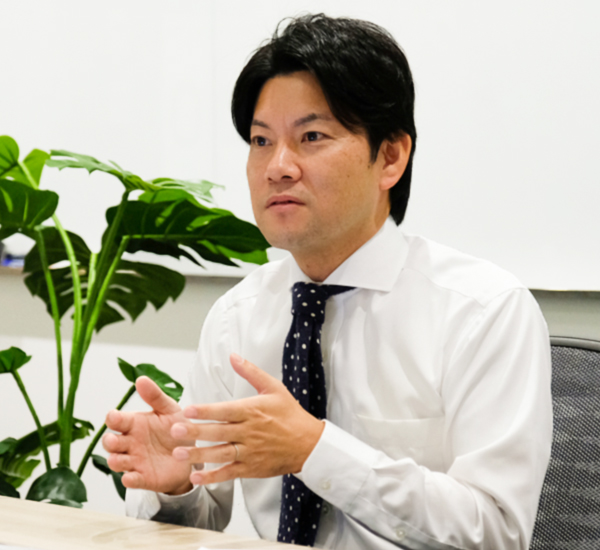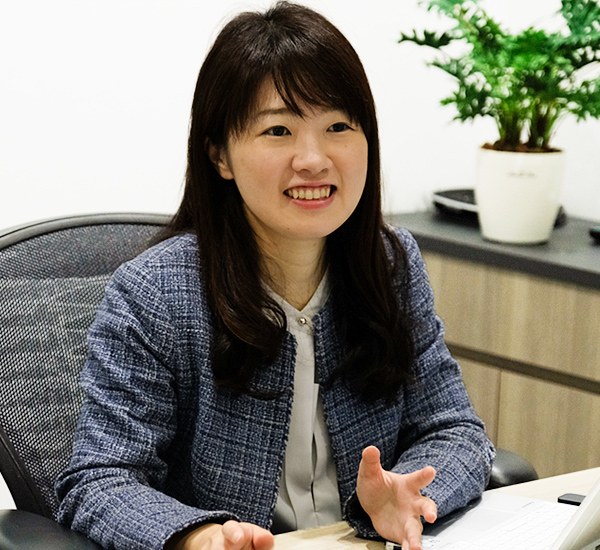
Supporting a Worker - Friendly Workplace with TRAINA: Changes to Contact Centers Brought on by AI (Part 2)
In Japan, human resource shortages are becoming more severe at contact centers, and increasing the productivity of existing communicators is an urgent priority. NRI is providing “TRAINA,” a system incorporating artificial intelligence (AI), to contact centers in various industries and of various scales. In this Part 2 of our three-part series introducing the current needs at contact centers and what kind of possibilities exist, we asked Keisuke Nakagawa and Kayano Umezawa, who have been involved in proposing and introducing TRAINA, about the situation at companies that have installed TRAINA and the benefits they have experienced.
Changes to Contact Centers Brought on by AI (Part 1)
Call Times Reduced by 20% After Introducing AI
--- Specifically, what kinds of tasks can AI be used for?
Nakagawa: In the series of tasks involved in handling telephone inquiries, there are three parts that we want to shorten: the time it takes to pick up the phone, the time spent talking after picking up the phone, and the time spent compiling and recording the content of the conversation (after-processing time). Of those, TRAINA focuses on reducing the time spent talking and the after-processing time.
For example, a communicator at a major service company, upon receiving a question, used to search each of multiple internal databases in order to respond. After TRAINA was installed, information prepared by each department was managed in an integrated manner, and a function for automatically transcribing speech and a support function for showing items to be confirmed with the customer were added. As a result, talk times were reduced by 20%.
--- If it becomes easier to look up necessary information and quickly ascertain a customer’s situation by using supplementary information, it becomes possible to give an appropriate answer without making the customer wait, which must lead to improved customer satisfaction.

Nakagawa: There is a wide variety of inquiries made to contact centers, from ones that can be answered simply to more complicated ones; therefore, communicators must be trained in advance. The “Call Center White Paper” includes data showing that three to six months’ worth of training is provided. By providing knowledge support with AI, we can expect not only improved work efficiency, but also shorter training periods.
--- How can after-processing times be reduced?
Umezawa: At contact centers, we often hear the complaint that compiling the content and creating a response record after hanging up the phone is hard work. Since TRAINA is capable of transcribing and recording conversations in real time using speech recognition, and also of automatically summarizing the content, communicators do not need to create a response record from scratch, and can complete the task mainly just by correcting typographical errors and omissions. In the case of input by hand, there is a lot of discrepancy, with some workers writing every last detail and others being very concise, so being able to create uniformity is another point of satisfaction. One life insurance company that introduced TRAINA found their work times reduced by half. A home appliance manufacturer saw times reduced from five minutes to one minute. The same home appliance manufacturer also succeeded in gaining a hint for a product proposal from a casual remark made by a customer.
--- It seems that great advantages can be expected, but when it comes to introducing AI, are there high hurdles in terms of data and learning?
Nakagawa: Contact centers have data on all past response histories, so there is no need to prepare any new data. After the system is in use, communicators revise summary results, and the revised summarized results are used for learning, improving the AI precision. There is little burden of advance preparation, and it being a model that grows the more it is used is a major advantage, I believe.
--- Is the TRAINA technology used anywhere besides contact centers?

Umezawa: There is a company that uses TRAINA to monitor and analyze the content of interactions between sales personnel and customers. In recent years, there is an increasing tendency to hold companies accountable, so giving an incorrect explanation can develop into a major problem and cause damage to the entire company. At this company, it was previously impossible to check all calls, and sampling had to be performed, but with TRAINA, it became possible to analyze all calls and perform monitoring checks on calls that seemed likely to pose a compliance issue.
Using AI to Create Worker-Friendly Workplaces
--- What should contact centers considering introducing AI keep in mind?
Nakagawa: Some people in charge of innovation and DX (digital transformation) focus on introducing AI simply out of the belief that introducing new technology will make work easier automatically. However, this can result in a greater burden on on-site communicators such as performing new operations on their screens, which can lead to reduced productivity. It is important for companies to consider which work processes they want to improve at their contact centers and come up with a concrete plan of how to reach their ideal, and then to select and introduce the necessary system.
Umezawa: Introducing a new system changes the flow of work considerably. The process of thoroughly organizing work tasks and ensuring that on-site coordinators understand how the system is operated and the scope to which it applies is crucial. We consider our role not just to be proposing and installing the system; connecting our customers’ technology coordinators and on-site workers is also an important job for us. We want to use our experience and know-how from years of consulting as a basis for helping to realize worker-friendly contact centers where AI and communicators coexist in harmony.
Profile
-
Keisuke Nakagawa
-
Kayano Umezawa
* Organization names and job titles may differ from the current version.